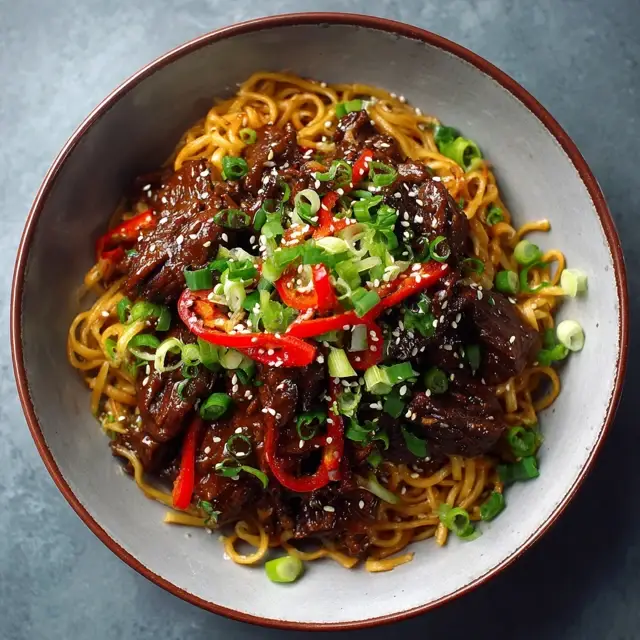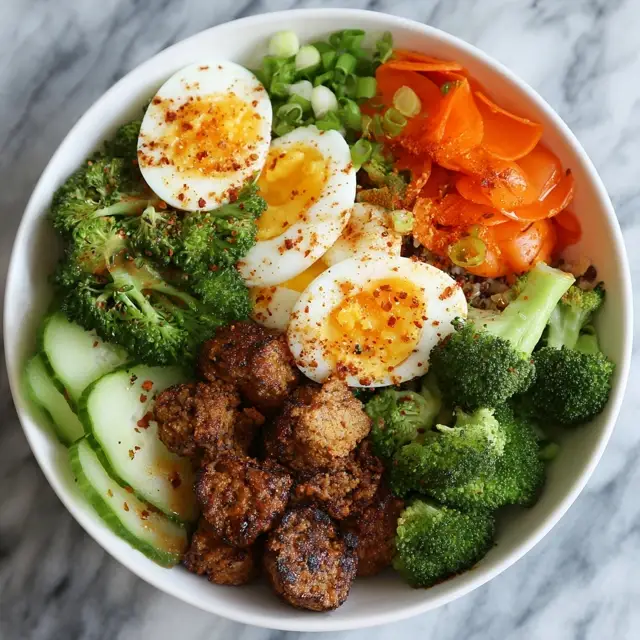Mongolian Beef Noodles: A Flavorful Journey into Savory Delights
Mongolian beef noodles offer a perfect harmony of tender beef, flavorful sauces, and chewy noodles that make every bite memorable. The dish originates from Chinese cuisine but has evolved into a global favorite thanks to its rich, savory taste and comforting texture. Each component of the recipe contributes to a symphony of flavors that excite the senses while providing a fulfilling meal. Mongolian beef noodles are not only delicious but also versatile, making them suitable for quick weeknight dinners, weekend feasts, or even meal prep for the week. The combination of caramelized beef, fresh vegetables, and a savory sauce coating soft noodles creates a dish that is satisfying yet sophisticated. Cooking this recipe at home allows for control over the quality of ingredients, portion sizes, and even the spice levels, ensuring every plate matches your personal preference.

The experience of preparing Mongolian beef noodles can be just as rewarding as eating them. Slicing the beef thinly, searing it to perfection, and mixing it with a homemade sauce brings an aromatic richness to the kitchen. Unlike takeout versions, homemade noodles maintain their integrity and absorb flavors evenly. The sauce typically combines soy sauce, ginger, garlic, and a hint of sweetness from brown sugar or hoisin sauce. These simple ingredients elevate the beef without overpowering it, while the noodles provide a comforting foundation for the flavors to meld together. Whether served as a family meal or as a dish to impress guests, Mongolian beef noodles capture the essence of hearty Asian cuisine in a single bowl.
Ingredients Needed
Creating authentic Mongolian beef noodles requires fresh, high-quality ingredients. Below is a detailed list with approximate calorie counts per serving to help you stay mindful of nutrition while enjoying the dish.
| Ingredient | Quantity | Calories (per serving) |
|---|---|---|
| Beef sirloin, thinly sliced | 1 pound | 600 |
| Soy sauce | 1/3 cup | 50 |
| Brown sugar | 1/4 cup | 180 |
| Garlic, minced | 4 cloves | 20 |
| Ginger, minced | 2 teaspoons | 10 |
| Green onions, chopped | 4 stalks | 15 |
| Red bell pepper, sliced | 1 | 30 |
| Carrot, julienned | 1 medium | 25 |
| Broccoli florets | 2 cups | 55 |
| Cornstarch | 2 tablespoons | 60 |
| Vegetable oil | 2 tablespoons | 240 |
| Egg noodles | 12 ounces | 420 |
| Sesame oil | 1 teaspoon | 40 |
| Water | 1/2 cup | 0 |
Step-by-Step Cooking Instructions
- Prepare the Beef: Slice the beef thinly across the grain. Toss the slices in cornstarch until evenly coated. This ensures the beef remains tender and the sauce clings properly during cooking.
- Cook the Noodles: Bring a large pot of water to a boil. Cook egg noodles according to package instructions until al dente. Drain, rinse with cold water, and set aside to prevent sticking.
- Prepare the Sauce: In a small bowl, combine soy sauce, brown sugar, garlic, ginger, and water. Stir until the sugar dissolves completely.
- Sear the Beef: Heat vegetable oil in a large skillet or wok over medium-high heat. Add beef in a single layer. Sear for 2 to 3 minutes per side until brown. Remove beef and set aside.
- Cook the Vegetables: In the same skillet, add bell pepper, carrot, and broccoli. Stir-fry for 4 to 5 minutes until vegetables are tender-crisp.
- Combine Beef and Sauce: Return beef to the skillet. Pour in the sauce and toss to coat evenly. Allow the mixture to simmer for 2 to 3 minutes so the sauce thickens slightly.
- Add Noodles: Toss the cooked noodles into the skillet. Mix thoroughly so every strand absorbs the flavorful sauce. Drizzle with sesame oil for added aroma.
- Garnish and Serve: Sprinkle with chopped green onions. Serve hot in deep bowls to retain warmth and flavor.
Tips for Customizing the Recipe
Mongolian beef noodles offer ample flexibility to match personal tastes. For a spicier version, add sliced chili peppers or a teaspoon of chili paste to the sauce. Vegetables can be rotated according to seasonal availability or preference. Snap peas, mushrooms, or zucchini work beautifully. For a low-carb option, substitute noodles with spiralized zucchini or shirataki noodles. Swapping beef for chicken, pork, or tofu can also provide variation without compromising flavor. Marinating the beef for 20 minutes in soy sauce, garlic, and ginger can enhance tenderness and infuse deeper flavor. Adjust the sweetness by modifying the amount of brown sugar. Finally, garnishes such as sesame seeds, crushed peanuts, or fresh cilantro add both texture and visual appeal.

Nutritional Information
Understanding the nutritional content helps in balancing indulgence with health consciousness. Mongolian beef noodles contain a combination of protein, carbohydrates, and healthy fats. The beef provides high-quality protein and essential vitamins such as B12 and iron. Vegetables contribute dietary fiber, antioxidants, and vital minerals. Noodles serve as a carbohydrate source, providing energy. The sauce, while flavorful, can be adjusted in sugar content to meet dietary needs. A standard serving of Mongolian beef noodles ranges from 650 to 750 calories depending on portion size and ingredient variations. Sodium levels can be moderated by choosing low-sodium soy sauce. Incorporating more vegetables increases fiber while reducing calorie density.

Serving Suggestions
Serving Mongolian beef noodles is an opportunity to create a visually appealing and satisfying meal. Pair the dish with light sides such as a cucumber salad or pickled vegetables to balance richness. For an authentic Asian dining experience, serve with steamed dumplings or spring rolls. Garnishing with fresh herbs like cilantro or adding a squeeze of lime can enhance freshness. Rice is optional but can be served alongside for those preferring a more traditional accompaniment. For a family-style presentation, serve directly from a large skillet to maintain warmth and encourage sharing. Individual bowls with extra green onions on top create a visually inviting display.
Frequently Asked Questions
Can I make Mongolian beef noodles ahead of time?
Yes, cook the beef and vegetables separately and store in airtight containers. Noodles are best cooked fresh to maintain texture.
What is the best type of noodle to use?
Egg noodles work best due to their ability to absorb sauce while retaining chewiness, but you can substitute with rice noodles or even fettuccine.
How can I make the sauce thicker?
Cornstarch is the key. Mix it with cold water before adding to the sauce to avoid lumps. Simmer until desired consistency is reached.
Can I make it vegetarian?
Absolutely. Replace beef with tofu or tempeh and increase the variety of vegetables for protein and texture.
Is it spicy?
Traditionally, it is mild, but adding chili peppers, chili paste, or sriracha can introduce heat.
Conclusion
Mongolian beef noodles bring warmth, flavor, and satisfaction to any meal. The combination of tender beef, fresh vegetables, and perfectly cooked noodles coated in a rich sauce creates a dish that appeals to all senses. Preparing it at home allows customization of ingredients, spice levels, and presentation, ensuring each plate is tailored to your taste. Whether enjoyed as a comforting solo meal or shared with friends and family, Mongolian beef noodles remain a versatile and beloved choice. Cooking it fosters a deeper appreciation for the balance of textures, flavors, and aromas that make Asian cuisine so universally loved. With simple steps and fresh ingredients, this dish transforms a routine dinner into a flavorful experience worth repeating.






